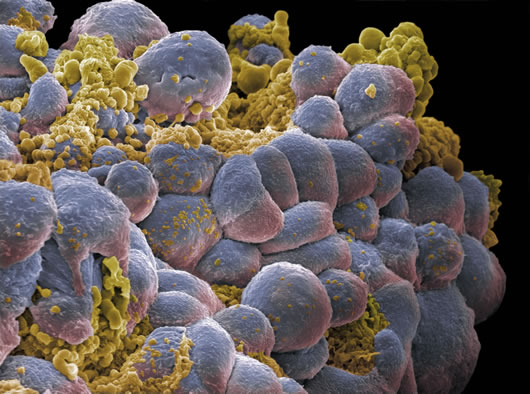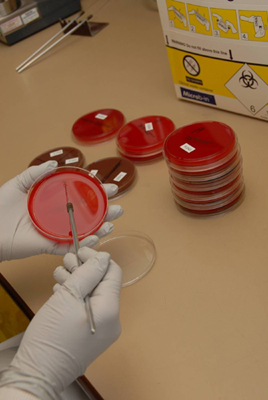Basic knowledge of scientific processes can be very useful to possess. However, one can only glean so much from such rudimentary “textbook’ learning. In the case of many sciences, particularly those pertaining to the medical field, such knowledge needs to be applied in the real world. The scientific world’s response to this necessity has been the development of specialized labs for virtually any imaginable field of science.
UCLA is home to many such labs, including one we visited today. Personally, I thought the most interesting thing we were shown was a culture of breast cancer sells taken from a women who had died in 1996. However, the cancerous cells continued to grow in the petri dish for over ten years because they were placed in a nutrient rich solution/medium. Additionally, the solution in which the cells were growing was notably red. Interestingly, this vibrant color served an important role. The distinct color of the solution indicated the pH of the solution, ensuring that the environment remained stable to ensure the continued growth of the cells. Therefore, any variation in the color of the solution would be a sure indicator of an environmental inbalance in the pH. Thus, color clearly can serve both an important purpose in science and art.


In the afternoon, a lecture on the use of nanotechnology in biomedicine brought up the earlier discovery and potential use of “vault” cells. Found in virtually every modern day eukaryote, scientists discovered these vaults fairly recently. However, though theories exist, no one is entirely certain as to the purpose vaults currently solve, if any. The potential of vaults lies in their hollow interior. Currently, scientists envision using vaults to possibly transport chemotherapy drugs throughout the body and to sites containing cancerous tumors. For now, however, vaults remain in the early experimental stage of this new field of “nanomedicine”.
